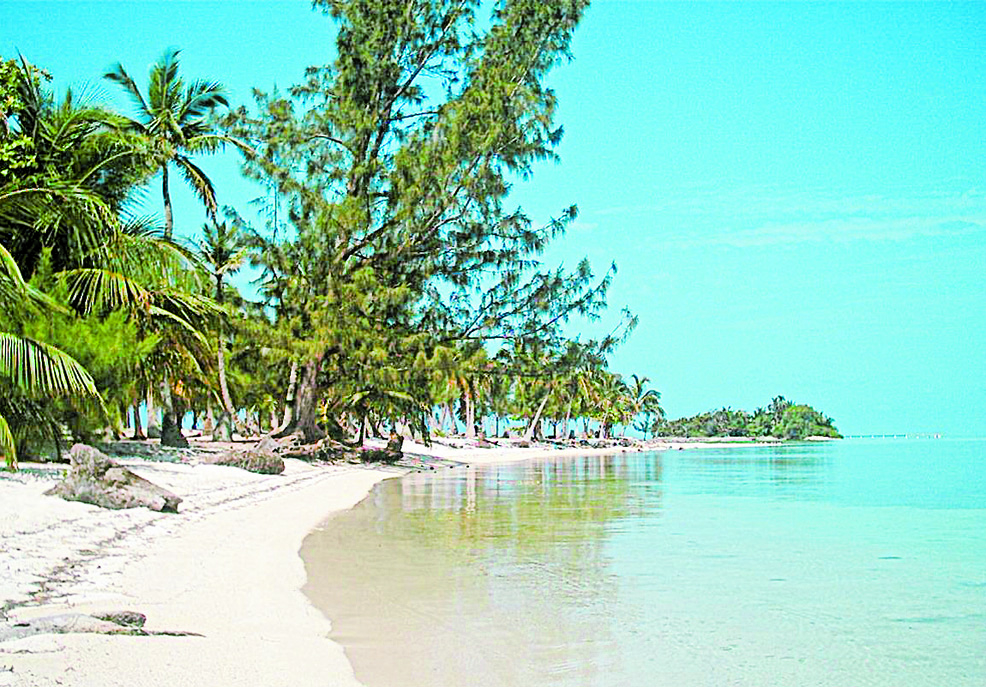Útila Island, an unknown Caribbean paradise

It's the smallest island in Honduras and the closest to the Caribbean mainland . Útila is located in the northern part of the continent, and travelers will find turquoise waters away from the crowds. This small island near the homes of stars like Michael Douglas and Catherine Zeta-Jones is the destination of the moment.
The whale shark, considered the largest fish in the world, is one of the animals that make up the area's marine fauna, becoming an essential tourist attraction for diving and snorkeling enthusiasts, a type of tourism on the rise.
Surrounding the island is the Great Mesoamerican Barrier Reef , which has several internationally certified diving schools to explore this small paradise beneath its waters.
One such school is Útila Water Sports, led by former island mayor Troy Bodden.
“Útila is the most beautiful place in the world. Columbus landed his ships here, attracted by its beauty,” Bodden told EFE about the small island, where he has incorporated innovative projects related to sustainability and recycling, such as streets paved with mortar made from recycled products.
With a surface area of just 50 kilometers, eleven kilometers long and four kilometers wide at its widest point, the island has a population of almost five thousand inhabitants and welcomes small tourist fleets attracted by its paradisiacal beaches and its only populated center, East Harbor, a long street that outlines the silhouette of the coast.
The island, whose inhabitants are descendants of the Payas (related to the Mayans), was later populated by English pirates and other inhabitants descended from Grand Cayman and its neighboring bay islands such as Roatán, Guanaja, Barbareta, Morat, Santa Elena, and the Swan Islands.
Foreign tourists, many of whom have become residents over time, converge with a population whose main source of income is tourism in an ecosystem marked by friendliness and tranquility that also boasts an attractive and bohemian nightlife.
Local gastronomy With fish and seafood as its central axiom, the island's cuisine focuses on local produce through preparations enriched by the fusion of Caribbean, Central American, and African cultures and flavors.
You'll find dishes like tapados, a thick, spicy soup with seafood; baleadas, a typical dish spread throughout the country consisting of tortillas stuffed with crushed red beans and cheese; and peces frito con tajada, fried fish served with slices of green plantain.
There's also breaded shrimp, a gastronomic delight to enjoy on the street, and also one of the specialties of Restaurant 1104, where they are served with tartar sauce and passion fruit puree.

The crystal-clear waters and white sand are part of this island's charm. Photo: EFE
Facing this island, on mainland soil, lies La Ceiba, the capital of the Atlántida department and the fourth most populous city in Honduras. A place where beach and relaxation activities converge with adventures such as zip lines, expeditions, and rafting down its vast rivers.
Long known as an essential hub for the region's fruit trade, offering products such as bananas and pineapple, La Ceiba, or "the bride of Honduras," is one of the region's main hubs for foreign trade.
La Ceiba is home to the Pico Bonito National Park and the Cuero y Salado Wildlife Refuge, which are home to more than 35 species of animals, including the manatee. Another popular spot is the Cangrejal River basin, with its many trails and the opportunity to raft.
In contrast to the adventures, La Ceiba boasts hot springs that have established themselves as a haven of peace . Located in the heart of the vegetation, after almost a kilometer on foot, the area's hot waters form natural pools of hot water with mud that moisturizes the skin thanks to its sulfur content.
On the shores of the Caribbean Sea and just over fifteen kilometers from La Ceiba, Sambo Creek is also located, a traditional village of the Garifuna ethnic group, a group descended from Africans and the indigenous peoples of the Caribbean who inhabit parts of Honduras, Nicaragua, Belize and Guatemala, with more than 600,000 residents.
The Garifuna have a prominent musical culture with rhythms marked by drums and a cuisine based on dishes such as machuca, which combines mashed green plantain with coconut milk and fried fish, or ereba, a cornerstone of their cuisine, a cassava bread that accompanies most meals.
Among their culinary culture, their own drink stands out, gífiti – 'bitter' in the Garifuna language – an alcoholic beverage created as a medicine that is also attributed with digestive properties and has become part of the Garifuna identity.
eltiempo





